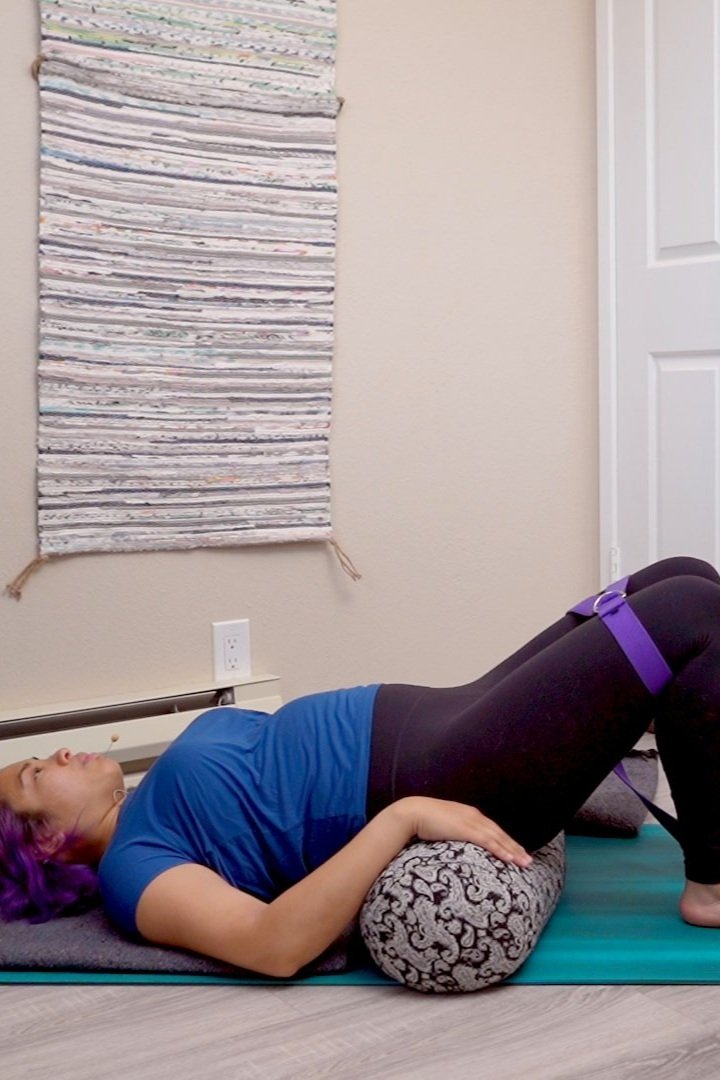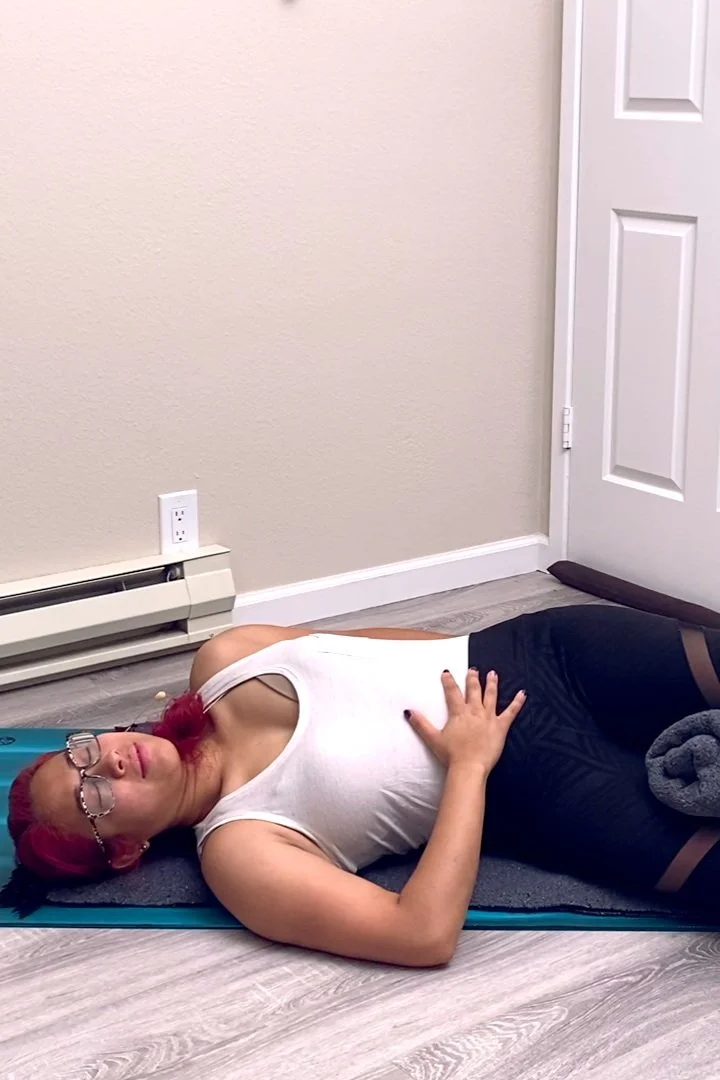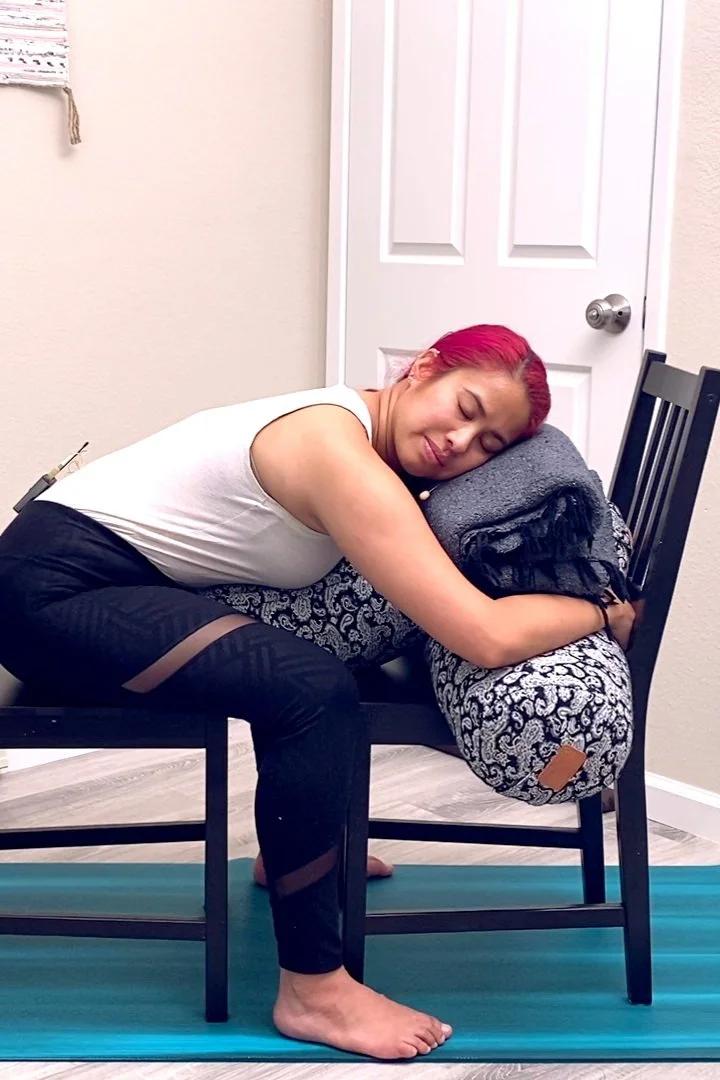The variation of a twist includes a weight, which can help your body feel grounded in this twist. Additionally, using a rolled-up blanket between your legs can give a surface for your legs to rest on and facilitate releasing of your leg muscles. Weight alternatives can be a weighted blanket, a bag of rice, or even another bolster.
Read MoreRestorative bridge pose (Setu Bandha Sarvangasana) is a great way to gently open up the front of the body. It is a good pose to practice if you've been sitting and/or staring at a screen all day. Your backbend in bridge pose can be personalized by adjusting the height underneath your hips. The higher the height, the more intense your backbend will be.
Read MoreA restorative supine twist is a gentle way to lengthen your side body. Remember, the pose is meant to feel comfortable and sustainable for a few minutes, so support yourself with props as much as needed. Pull the bolster behind you closer to your body and add height to the bolster if the twist feels too intense.
Read MoreFor those who prefer to stay higher off the ground, here's a forward fold variation that uses 2 chairs. Chairs are versatile props that are obtainable at any budget. If you choose to practice with a chair, find one that is sturdy, can support your entire weight, and is stationary (no wheels).
Read MoreJust because the pose is called "Legs up the wall" doesn't mean you need a wall to practice it. As someone who does not have a lot of free wall space, this is my go-to variation for Viparita Karani. This variation involves a chair and the height can be adjusted by strategically adding props to the seat of the chair or underneath your hips.
Read MoreA restorative frog pose is a gentle way to open the hips. I personally like feeling supported underneath my forehead. The blanket on a block holds my head in a comfortable position and allows my neck to release tension. Remember, the pose is meant to feel comfortable so support yourself with props as much as needed and add height underneath your torso if you feel an intense stretch in your hips.
Read MoreWhen neither lying on your back nor lying on your belly are options for you, there's always the side-lying savasana. This pose reminds me a lot of lying in bed, and as a result, always puts me to sleep. This is an especially great savasana option for pregnancy.
Read MoreThis prone twist will gently lengthen your side body. I like to practice with a rolled-up blanket in between my legs, as I feel like my legs can relax when there’s something to rest on. Remember to pad your hips as the ground can feel particularly uncomfortable in this pose.
Read MoreDid you know that there is such a thing as being TOO tired? This feeling is called “burn-out” and is defined as being “in a state of physical or mental collapse”. Burn-out happens when your body and mind don’t have the ample opportunity to recover.
While tiredness can be remedied with a day at home sleeping, recovering from burnout takes more time and intentional effort. The best way to deal with burn-out is to avoid it by paying attention to the signs of tiredness and giving yourself plenty of time to rest and recover.
Read MoreYoga props unlock the full potential and benefits of a yoga pose. Using yoga props in your practice increases your accessibility to these benefits and facilitates a different experience that you may not experience without props. While there are lots of different props out there, yoga blocks are the most commonly used. Yoga blocks are one of the most common props found in yoga studios and one of the most versatile props to use in a yoga practice. They are typically in the shape of a rectangular cube and are made of dense material that holds its shape such as wood, foam, or cork. Yoga blocks have three heights: low, medium, and high. The height of the yoga block can be adjusted to fit the needs of your practice. We will talk about the main functions of a yoga block, uses in poses, and alternatives.
Read More










